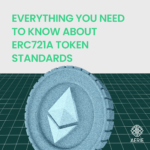What is webRTC
“WebRTC stands for Web Real-Time Communication. It’s a low-latency technology that uses JavaScript APIs to access your computer’s camera and microphone, thereby enabling media to be sent back and forth directly between two peers. With WebRTC, you can live stream via a browser (like Chrome or Firefox) without using a plugin or app (like Zoom). And because WebRTC transports data in a matter of milliseconds, it’s perfect for interactive use cases like video chats. WebRTC is a powerful tool that’s quickly becoming the technology of choice for real-time streaming. It also works across all browsers and mobile operating systems that support the WebRTC APIs. So, without drowning in all the terminology, how does WebRTC work? Let’s break it down into digestible chunks.
WebRTC (Web Real-Time Communication) is a technology which enables Web applications and sites to capture and optionally stream audio and/or video media, as well as to exchange arbitrary data between browsers without requiring an intermediary.
WebRTC Defined
You will typically see this description for WebRTC:
- WebRTC provides real-time, peer-to-peer communication between web applications.
Translation:
- WebRTC lets your browser talk directly to your friends’ browsers.
You might be wondering: Doesn’t that already happen when two people are communicating through their computers? To clarify, let’s review what a typical exchange over the public internet looks like.
HTTP Requests
Say you’re checking your Gmail, and start by clicking on Gmail icon. This action sends a request to open the Gmail login page. Google then receives the request, processes it, and returns the login page. At that point, you’re prompted to enter your login info. Once you do so and click enter, you send a new request to Google to open the page containing your emails. Google must receive this request and approve your login credentials before opening your inbox.
This is how common HTTP requests work, and the response chain of events will continue for each action you take on the site. With WebRTC, you’re able to skip the request and response chain entirely. Once the initial connection is established between the two computers, WebRTC lets users freely send media back and forth in real time.
A common misunderstanding for those new to WebRTC is that with a peer-to-peer connection, a server isn’t required. In reality, a server is essential to create the initial connection — but you’re able to communicate directly after that…”
PLEASE CLICK HERE TO READ FULL ARTICLE









